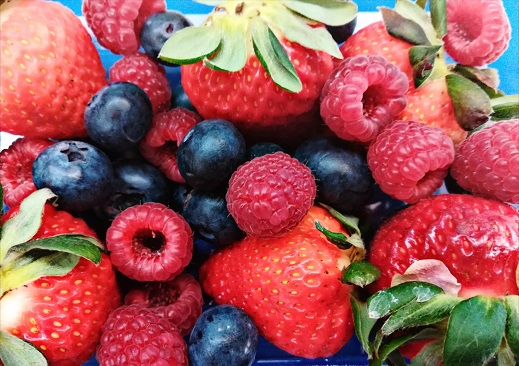
- The novelty of this work lies in the application of a method that had already been implemented previously for the detection of infectious viruses in vegetables, water and bivalve molluscs, and has now been validated in strawberries, raspberries and blueberries.
- The work of the IATA researchers (CSIC) is published in the journal Food Control
Researchers at the Institute of Agrochemistry and Food Technology (IATA), a centre of the Spanish National Research Council (CSIC), have perfected a system for detecting foodborne viruses in red fruits. The improved method determines whether the fruits are fit for consumption or not, and is published in the journal Food Control.
The detection of viruses in food is especially complex, although the publication of ISO 15216-1:2017 has allowed the implementation of standardized methodologies in food and water control laboratories. Gloria Sánchez, IATA researcher and responsible for this study, states that "unfortunately this ISO methodology does not differentiate between infectious and non-infectious viruses, and this makes it extremely difficult to interpret a positive result in terms of risk analysis for consumers".
The novelty of this study lies in the application of a method that had already been implemented previously by IATA scientists for the detection of infectious viruses in vegetables, water and bivalve molluscs, and has now been validated in strawberries, raspberries and blueberries.
"We have developed a methodology that allows a better correlation between the detection of viruses through the ISO standard and the infectivity of the sample thanks to a treatment with a viability reagent and a photoactivation step", points out Gloria Sánchez.
The main pathogenic viruses that we can acquire by eating contaminated food are the noroviruses, as well as the hepatitis A virus. Both are spread mainly through the oral faecal route.
In recent years, the incidence of foodborne outbreaks caused by these pathogens has increased considerably, partly due to globalized trade and changes in consumption habits.
The foods most at risk to the consumer are bivalve molluscs, leafy vegetables, ready-to-eat foods and red fruits. The latter have been associated with massive outbreaks of gastroenteritis and hepatitis due to consumption of frozen strawberries or raspberries.
This IATA work has been carried out in collaboration with the University of Jinan in China due to the great interest of this country in the development of methods for virus detection, since some of these outbreaks have been due to the consumption of strawberries or raspberries from China.
Jiayin Chen, Xiyang Wu, Gloria Sánchez, Walter Randazzo. Viability RT-qPCR to detect potentially infectious enteric viruses on heat-processed berries. Food Control. DOI.org/10.1016/j.foodcont.2019.106818

